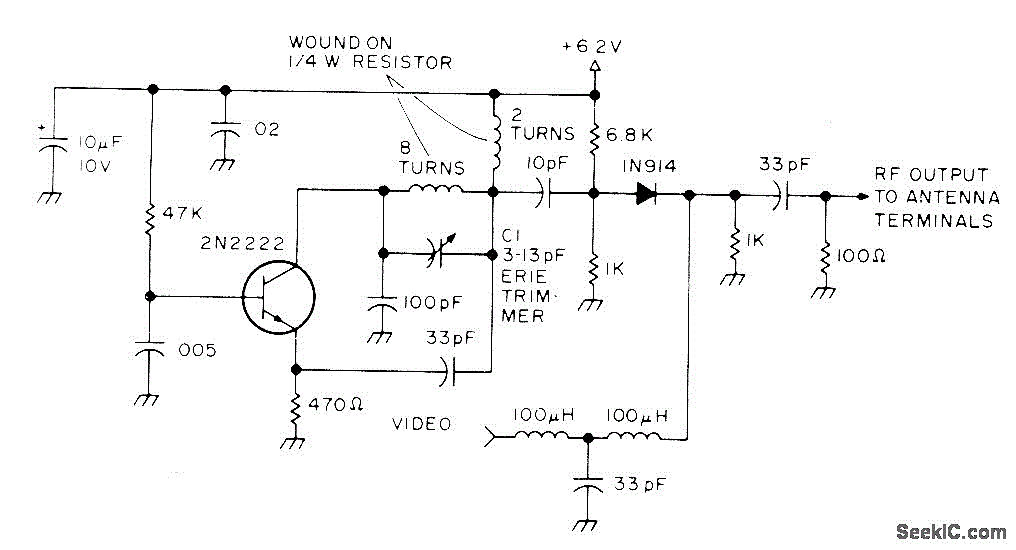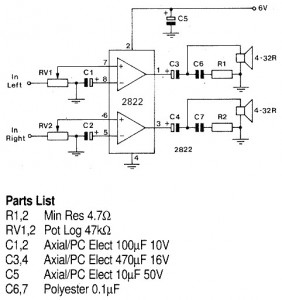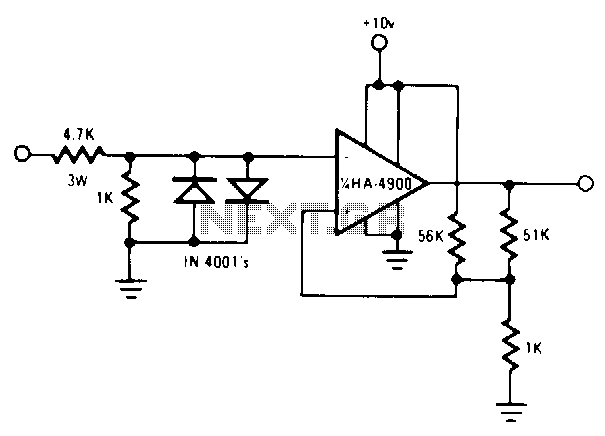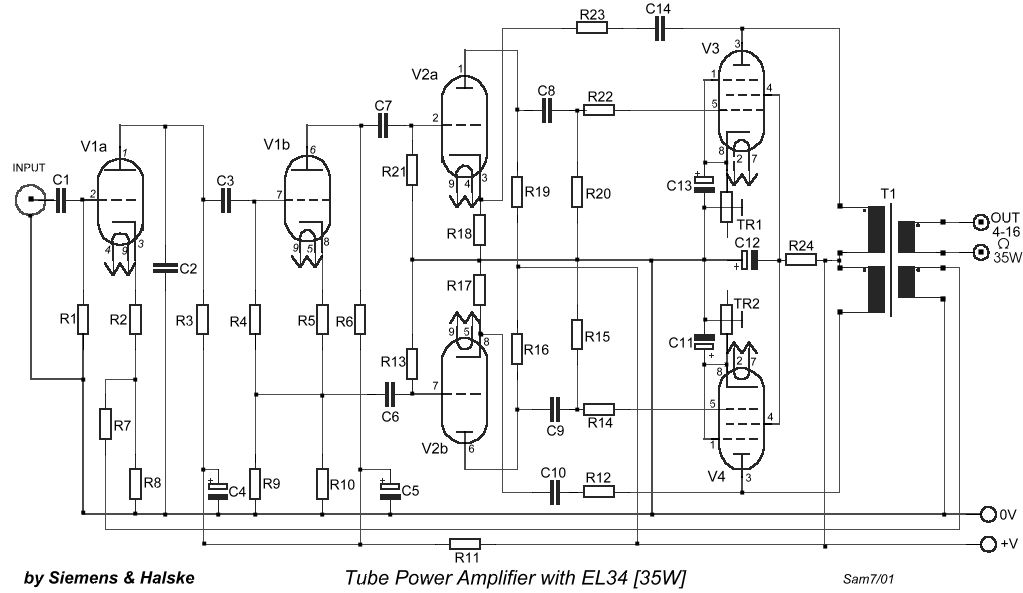
VHF MODULATOR circuit

Developed as an interface between the General Instruments AY-3-8500-1 TV game chip and the antenna terminal of a TV set. Adjust capacitor C1 to the frequency of an unused channel to which the receiver is set for playing games. The article provides all circuit diagrams but discusses construction only in general terms. - S. Ciarcia, Hey, Look What My Daddy Built!, 73 Magazine, Oct. 1976, p 104-108.
The described circuit acts as a crucial interface component that connects the General Instruments AY-3-8500-1 TV game chip to the antenna input of a television set. This integration allows for the output of game signals to be transmitted directly to the TV, enabling gameplay through a standard television display.
The core of the circuit is the AY-3-8500-1 chip, which is designed to generate video and audio signals for various games. The output from the chip needs to be modulated to match the frequency of an unused television channel. This is where the adjustable capacitor C1 comes into play. By tuning C1, the user can set the output frequency to align with a specific channel that is not in use, ensuring that the game signals can be received clearly by the television without interference from other broadcasts.
The schematic for this circuit would typically include the AY-3-8500-1 chip, C1, and additional passive components like resistors and capacitors that help stabilize the signal and filter out noise. The circuit may also include a power supply section to provide the necessary voltage levels for the chip to operate efficiently.
While the article provides all necessary circuit diagrams, it emphasizes a general approach to construction rather than detailed assembly instructions. This suggests that a certain level of expertise in electronics assembly is assumed, allowing the reader to interpret the diagrams and implement the design with an understanding of standard electronic practices.
Overall, this interface circuit exemplifies a practical application of electronics in retro gaming, bridging the gap between vintage gaming technology and contemporary television systems.Developed as interface between General Instruments AY-3-8500-1 TV game chip and antenna terminal of TV set. Adjust C1 to frequency of unused channel to which receiver is set for playing games. Article gives all circuits but covers construction only in general terms.-S. Ciarcia, Hey, Look What My Daddy Built!, 73 Magazine, Oct. 1976, p 104-108.. 🔗 External reference
The described circuit acts as a crucial interface component that connects the General Instruments AY-3-8500-1 TV game chip to the antenna input of a television set. This integration allows for the output of game signals to be transmitted directly to the TV, enabling gameplay through a standard television display.
The core of the circuit is the AY-3-8500-1 chip, which is designed to generate video and audio signals for various games. The output from the chip needs to be modulated to match the frequency of an unused television channel. This is where the adjustable capacitor C1 comes into play. By tuning C1, the user can set the output frequency to align with a specific channel that is not in use, ensuring that the game signals can be received clearly by the television without interference from other broadcasts.
The schematic for this circuit would typically include the AY-3-8500-1 chip, C1, and additional passive components like resistors and capacitors that help stabilize the signal and filter out noise. The circuit may also include a power supply section to provide the necessary voltage levels for the chip to operate efficiently.
While the article provides all necessary circuit diagrams, it emphasizes a general approach to construction rather than detailed assembly instructions. This suggests that a certain level of expertise in electronics assembly is assumed, allowing the reader to interpret the diagrams and implement the design with an understanding of standard electronic practices.
Overall, this interface circuit exemplifies a practical application of electronics in retro gaming, bridging the gap between vintage gaming technology and contemporary television systems.Developed as interface between General Instruments AY-3-8500-1 TV game chip and antenna terminal of TV set. Adjust C1 to frequency of unused channel to which receiver is set for playing games. Article gives all circuits but covers construction only in general terms.-S. Ciarcia, Hey, Look What My Daddy Built!, 73 Magazine, Oct. 1976, p 104-108.. 🔗 External reference





